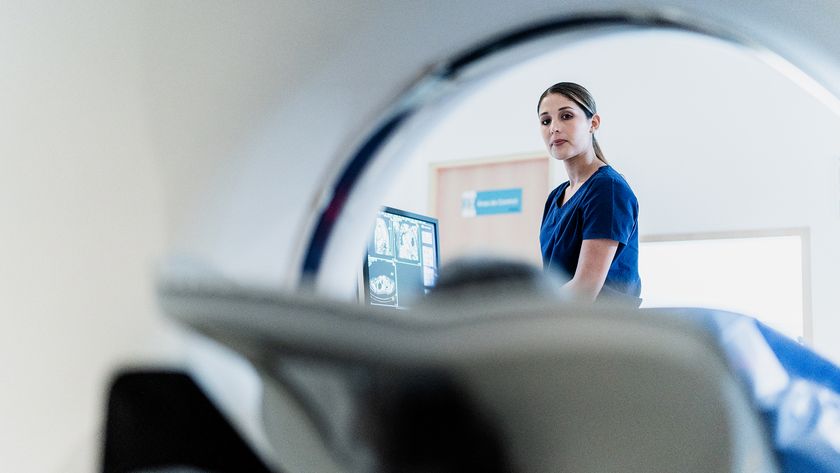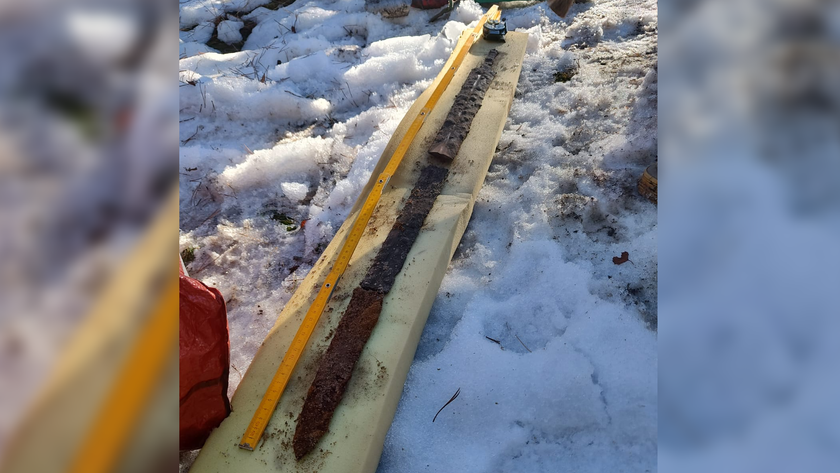Best Medical Alert Systems

Most people would prefer to live in their own homes in their old age, rather than in nursing homes. But living independently can be scary when a fall or a medical emergency could mean a one-way trip to the hospital.
Medical alert systems can make independent living safer for older adults.
"Emergency Response Technologies are important, because falls are the number one cause of death due to injury" in people over age 75, Andrew Carle, executive-in-residence at the Program in Senior Housing Administration at George Mason University, wrote in an email to Live Science. Falls "are also the number one cause of hospitalization due to injury for this age group."
One-third of seniors ages 65 and older fall each year, as do half of people ages 85 and older, Carle said.
There are different types of medical alarm systems, but in general, they all include a pendant, or a small keychainlike device, that has a Help button that automatically connects the wearer to an emergency dispatch person when pressed.
The best devices, Carle said, can detect when the wearer falls down. Upon sensing a sudden movement and impact, these devices automatically call the company's emergency dispatcher, who can check with the wearer to make sure everything is all right, and connect the individual to emergency services if not.
That means that devices with this feature can save lives even if the user is unconscious, panics and forgets about the service, or is afraid or embarrassed to call for help, Carle said.
Sign up for the Live Science daily newsletter now
Get the world’s most fascinating discoveries delivered straight to your inbox.
The latest medical alert devices also have sleeker and subtler designs than older devices, whose designs could be stigmatizing, Carle said. Newer devices use wireless technology instead of radio frequency technology, which means they work everywhere, not just within the home. The company SafeGuardian offers good options, Carle said.
For people thinking about getting a medical alert system, there are many options, and the number of home-based systems can be staggering. If these kinds of systems might fit your needs, read on for analysis of the top three, as chosen by Live Science's sister site Top Ten Reviews.
#1. Medical Guardian
The latest Medical Guardian Medical Alert Systems Classic Guardian option allows users to move 1,300 feet (nearly 400 meters) in any direction from the console while staying protected, an improvement over earlier models. The pendant buttons are relatively subtle and can be worn on the neck, wrist, belt or pocket. The base unit, which has a battery life of up to 32 hours, is also smaller and sleeker than other companies' offerings.
Medical Guardian offers both in-home systems (including one that uses a cellular line instead of a landline) and a mobile, GPS-enabled version that users can take outside the home. In addition, with a premium package upgrade, the unit will incorporate fall-detection technology, which means the system sends for help if it detects a fall, and has a battery life of up to 36 hours.
The company doesn't offer smoke or carbon monoxide monitoring, but the consoles can detect extreme temperatures and notify emergency services in the case of a fire.
Ease of use: Medical Guardian's system requires no special skill or knowledge to install, and the company offers free equipment delivery. Online orders come with a free lockbox for outside key storage.
Help and support: Medical Guardian charges no activation or cancellation fees, and requires no long-term contracts. The company offers a 24/7 help line and live chat on its website. The staff members at Medical Guardian's monitoring centers are all 911-certified, meaning they can get an ambulance directly to the home. They also keep a list of your preferred doctors and family and trusted friends, in order to loop in everyone if an emergency arises.
GET QUOTE FROM MEDICAL GUARDIAN (1-800-863-4594) NOW>>>
#2. LifeFone
LifeFone Personal Response Service offers users a 480-foot (146 m) range in any direction with its waterproof pendants, which also come with removable belt or pocket clips for those who don't want to wear the devices as bracelets or necklaces. For those who need a larger range, LifeFone offers a base model (at no additional cost) with a 1,000-foot (305 m) range; that base console has a 32-hour battery life.
The company provides a lockbox, and also sells large Help buttons that users can affix to walls with Velcro in dangerous areas like bathrooms or hallways. The company offers smoke and carbon monoxide monitoring, as well as the option to get an upgraded pendant that can detect falls. Like other medical alert companies, LifeFone offers options that connect to a landline or a cellular network.
Ease of use: LifeFone is set up on the landline or cellular network and is easy to move around or relocate throughout the home. Users can also answer their phones by pressing the button on the pendant, a nice feature that makes this system functional on a daily, nonemergency basis. LifeFone also offers a beaded lanyard with a magnetic clasp so you can wear the help button around your neck.
Unlike other companies, LifeFone offers Worldwide Protection. This means the company gives users cards to carry in their wallets that let emergency responders access health history and other information no matter where they encounter the users.
Help and support: Users can reach customer service 24/7 by both phone and email. The company does require a contract, but does not charge cancellation fees should you choose to stop service. Contracts are available in monthly, annual and quarterly options, and all come with free activation. LifeFone also refunds customers for any unused time left on their contracts after cancellation.
#3. Bay Alarm Medical
With the Bay Alarm Medical Alert System, users wearing the pendant can move 1,000 feet (305 m) in any direction and still be in range of the console, a generous distance compared with many at-home systems. In most cases, the device will work even through exterior walls, offering protection for people when they're out in the yard as well as inside the home.
The waterproof alert pendant can be worn as a necklace or wristband or clipped to your belt. The system's battery backup lasts 32 hours. Bay Alarm also offers smoke and carbon monoxide monitoring for an additional monthly fee. For an extra monthly fee, customers can get an add-on fall-detection device that will automatically call for help when needed, as long as you have a landline. Unfortunately, the system does not include GPS tracking or medication dispensers. But Bay Alarm does offer cellular-enabled protection for families without landlines, as well as a GPS-enabled button for protection outside the home.
Ease of use: The console's large Help button is easy to see and to press in an emergency, and installing the system is as simple as plugging in the console. The system works on the home's phone line, but customers without a landline can use Bay Alarm's AT&T cellular system for a slightly higher monthly fee. For a one-time setup fee, the company will add a lockbox that emergency responders can use to get into the home if the user is incapacitated, which avoids the need for breaking windows or locks.
Help and support: Bay Alarm does not lock users into long-term contracts; customers pay a monthly fee and can cancel the service at any time. Bay Alarm offers service in 170 languages and provides live-chat support on its website, a rare bonus among medical alert companies.
Follow Stephanie Pappas on Twitter and Google+. Follow us @livescience, Facebook & Google+.

Stephanie Pappas is a contributing writer for Live Science, covering topics ranging from geoscience to archaeology to the human brain and behavior. She was previously a senior writer for Live Science but is now a freelancer based in Denver, Colorado, and regularly contributes to Scientific American and The Monitor, the monthly magazine of the American Psychological Association. Stephanie received a bachelor's degree in psychology from the University of South Carolina and a graduate certificate in science communication from the University of California, Santa Cruz.
Most Popular




